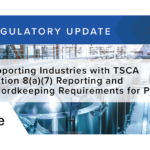
The field of environmental science and sustainability plays a vital role in ensuring the health and safety of our communities. One important aspect in this domain is conducting thorough and detailed environmental site assessments. In the city of Leander, Texas, Phase 1 Environmental Site Assessments are particularly critical in evaluating potential environmental risks associated with properties.
Understanding the Purpose of Phase 1 Environmental Site Assessments
Before delving into the intricacies of Phase 1 Environmental Site Assessments, it is important to comprehend their purpose. These assessments serve as a proactive measure to identify any existing or potential environmental hazards that may be present on a property. By conducting a comprehensive assessment, stakeholders gain valuable insights into the environmental conditions of a site, providing essential information for decision-making processes.
Importance of Environmental Site Assessments
Environmental site assessments are vital in safeguarding public health and the environment. By determining the potential existence of contaminants or hazardous substances, these assessments aid in the prevention of human exposure and ecosystem contamination. Additionally, they contribute to sustainable development practices and help mitigate potential liabilities for property owners and developers.
Key Components of Phase 1 Assessments
Phase 1 Environmental Site Assessments involve a systematic approach that comprises various essential components to ensure a comprehensive evaluation. These components include:
- Review of historical records and documentation related to the site.
- Inspection of the site and the surrounding areas for any visible signs of contamination.
- Evaluation of current and past uses of the property and nearby properties.
- Analysis of available maps, aerial imagery, and other relevant data to identify potential environmental risks.
Let’s take a closer look at each of these components to understand their significance in the assessment process.
Firstly, the review of historical records and documentation plays a crucial role in uncovering any past activities that might have contributed to environmental contamination. By examining old maps, photographs, and records, environmental consultants can piece together the puzzle of a site’s history, identifying potential sources of pollution and guiding further investigations.
Secondly, the on-site inspection is a critical step in the assessment process. Environmental consultants carefully examine the property and its surroundings, looking for visible signs of contamination such as discolored soil, unusual odors, or abandoned storage tanks. These visual cues provide valuable initial information and help direct subsequent sampling and testing efforts.
The evaluation of current and past uses of the property and nearby properties is another essential component. Understanding the activities that have taken place on and around the site can provide valuable context for assessing potential environmental risks. For example, if a neighboring property was historically used for chemical manufacturing, it raises the possibility of contamination migrating to the site under assessment.
Lastly, the analysis of available maps, aerial imagery, and other relevant data is a crucial step in identifying potential environmental risks. Environmental consultants utilize advanced technologies and GIS mapping tools to overlay various data layers, such as soil types, groundwater flow patterns, and proximity to sensitive receptors. This comprehensive analysis helps pinpoint areas of concern and guides the development of a focused sampling and testing plan.
By considering these key components, Phase 1 Environmental Site Assessments provide a comprehensive evaluation of a property’s environmental conditions. This detailed understanding allows stakeholders to make informed decisions regarding property transactions, development plans, and potential remediation efforts.
The Process of Conducting a Phase 1 Environmental Site Assessment in Leander
Embarking on a Phase 1 Environmental Site Assessment in Leander involves a methodical and detailed approach. This process can be broken down into several important stages, which include:
Initial Site Inspection
During the initial site inspection, qualified professionals visit the property to assess its physical characteristics and note any visible indications of potential contamination. This inspection serves as the starting point for evaluating the environmental condition of the site.
Historical Review of the Site
The historical review component involves an in-depth investigation of available archival records, maps, and other relevant materials to gather information about the site’s past uses and potential environmental risks. This step is crucial in identifying any potential ‘red flags’ that might warrant further investigation.
Evaluation of Surrounding Properties
Assessing the properties neighboring the site under investigation is an integral part of the Phase 1 process. This evaluation helps identify potential sources of contamination that could migrate onto the subject property or pose risks to nearby residents or ecosystems.
Potential Environmental Concerns in Leander
While every environmental site assessment is unique, there are certain common environmental concerns that are often encountered in Leander. These concerns include:
Soil Contamination
Due to the industrial history of certain areas in Leander, soil contamination can be a significant environmental concern. The presence of heavy metals, chemicals, or other pollutants in the soil can pose risks to human health and ecosystem integrity.
Groundwater Contamination
The proximity of certain Leander properties to groundwater sources increases the potential for groundwater contamination. Leaks from storage tanks, improper disposal of hazardous substances, or industrial activities can adversely impact the quality of the groundwater.
Hazardous Substances and Petroleum Products
Leander’s history of industrial activities and developments can lead to the presence of hazardous substances and petroleum products on properties. Proper assessment and management of these substances are crucial to mitigate risks associated with their potential release.
Interpreting the Results of Phase 1 Environmental Site Assessments
After completing a Phase 1 Environmental Site Assessment, it is essential to interpret the findings accurately. This step involves identifying Recognized Environmental Conditions (RECs) and understanding their implications:
Identifying Recognized Environmental Conditions (RECs)
RECs refer to any present or past activities, conditions, or circumstances that indicate the potential for contamination of a site. These may include the historical use of hazardous substances, underground storage tanks, or evidence of spills and leaks.
Understanding the Implications of RECs
Identifying RECs is the first step towards understanding the potential risks associated with a property. This information allows stakeholders to make informed decisions regarding property transactions, liability considerations, and future development plans.
Next Steps After a Phase 1 Environmental Site Assessment
Following the completion of a Phase 1 Environmental Site Assessment in Leander, several potential courses of action may be considered:
Phase 2 Environmental Site Assessments
When a Phase 1 assessment identifies a potential environmental concern, a Phase 2 assessment may be necessary. This more detailed analysis typically involves laboratory testing and sampling to confirm the presence and extent of contamination.
Remediation and Risk Management Strategies
If contamination is confirmed, the implementation of remediation measures is crucial. Remediation strategies aim to mitigate the risks associated with contaminated sites and restore them to safe and environmentally sustainable conditions. Additionally, risk management strategies can help mitigate liabilities and ensure compliance with applicable regulations.
In conclusion, Phase 1 Environmental Site Assessments in Leander play a pivotal role in safeguarding public health and the environment. By following a systematic process, examining potential environmental concerns, and interpreting assessment results accurately, stakeholders can make informed decisions and take appropriate action to support sustainable development practices in this vibrant community.
Ready to ensure your Leander property is environmentally sound and compliant with regulations? ESE Partners is here to guide you through the complexities of environmental assessments and remediation. Our team of experts specializes in providing thorough Phase 1 Environmental Site Assessments, tailored to meet the unique challenges of your business. With a commitment to sustainability and community well-being, we offer innovative solutions that align with your environmental goals. Don’t wait to address potential environmental concerns. Request A Proposal today and partner with ESE Partners for responsible and effective environmental problem-solving.








